Mary Anne Yarde's Blog: The Coffee Pot Book Club , page 145
April 3, 2019
#HistoricalFiction author, Amy Maroney, is talking about what inspired her to write her fabulous book — The Girl From Oto #Inspiration @wilaroney
Author’s Inspiration: The Drama of Art and WoolBy Amy Maroney
I was lucky enough to spend most of a year traveling through Europe with my family when our two daughters were nine and twelve. I had no idea when we set out on this adventure that it would inspire me to write historical mysteries about a Renaissance-era woman artist and the modern-day scholar on her trail.
During our travels in 2011-2012, we visited many museums full of portraits of long-dead people, painted by long-dead men. While I was thrilled to see all of this art, our daughters were underwhelmed. I wished the paintings were more relevant to the girls.
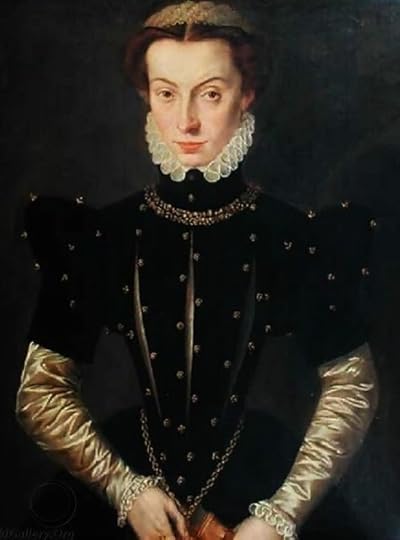 ortrait of Margaret of Lorraine, attributed to Caterina van Hemessen. Hangs at Magdalen College, Oxford.
ortrait of Margaret of Lorraine, attributed to Caterina van Hemessen. Hangs at Magdalen College, Oxford.Halfway through the trip, I was lucky enough to visit Oxford University and see a sixteenth-century portrait of a woman that was attributed to a female artist. I was floored. So there were women painters in those days! I learned that their work was often attributed to men or kept anonymous. Soon I became obsessed with their lost stories—and I resolved to write a novel on the topic.
At the same time, I developed an interest in the technological strides being made in the field of art conservation. With x-rays and other tools, researchers can now see under the layers of paint in a portrait, determine the exact age of a wooden panel, and so much more. My book would have a dual timeline, I decided, to show how a modern-day researcher can uncover clues about art and artists that have been buried for centuries.
I started researching Renaissance-era female artists and learned that many of them were nuns or spent time living in convents. This is how I got the idea to have Mira, the protagonist of the Miramonde Series, grow up in a convent. I spent more time in museums and libraries around Europe, gathering material.
I didn’t quite know where Mira’s world would be until we stayed in a medieval tower in the tiny village of Oto in Spain. For several days we looked out the tower windows at the snowy peaks of the Pyrenees and hiked through the beautiful valley of Broto and Ordesa National Park. The owners of the tower explained that their ancestors were barons whose roots went back to medieval days.
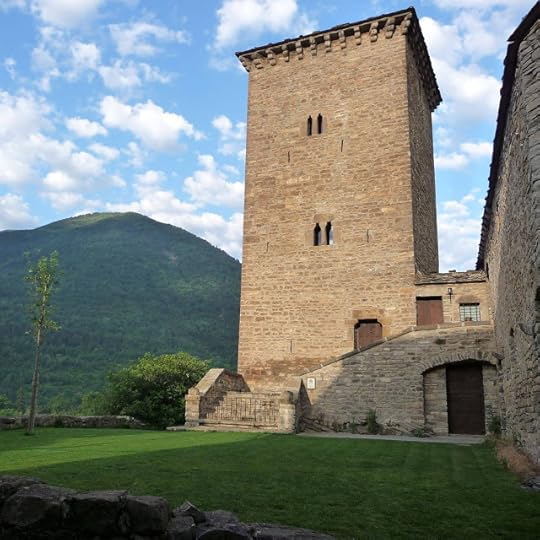 The tower of Oto in the foothills of the Pyrenees, Aragòn. Photo courtesy of La Torre de Oto.
The tower of Oto in the foothills of the Pyrenees, Aragòn. Photo courtesy of La Torre de Oto.During our visit to Oto, we often saw flocks of sheep being herded by shepherds. Each animal wore an iron bell around its neck and the jangle of bells played in the background as we explored the rugged landscape. Adding to the atmosphere were entire towns built of stone, slowly crumbling into the earth. In the abandoned town of Yosa, we explored a forgotten world of homes and overgrown gardens, listening for the sounds of ghostly voices on the wind.
I soon realized that as magical as this area was, we had stumbled upon a place with a well-documented and fascinating history. The Pyrenees were ruled in medieval days by wild creatures (bears, wolves, lynx) and wild weather. Winter snows shut down trade routes over the mountains each year. Avalanches and floods were constant dangers. Bandits plied the roads, often targeting pilgrims on the Camino de Santiago.
In those days, the mountain communities of the Pyrenees were governed by groups of “vecinos,” households that were independent of noble and royal oversight. They shared water, meadows, rights-of-way, and other resources. The leading families of these valleys kept records of their activities and business transactions. And their existence depended on livestock, especially sheep, that they herded to grazing meadows in the mountains each summer and took to lower altitudes in winter.
To defend their flocks, the shepherds of the Pyrenees developed skills and resourcefulness beyond those of any ordinary shepherd. For example, they bred a special type of guard dog, the great Pyrenees. The dogs wore spiked iron collars and had one job: to protect the flocks from bears and wolves.
I learned that merino wool was the jewel of Spain’s economy for hundreds of years. In fact, removing merino sheep from Spain was such a serious offense that for a time the official punishment was death. Merino wool had displaced English wool for Europeans in the 1500s (partially because of the Hundred Years War between England and France). The Aragònese took advantage of this by hauling it over the Pyrenees on the backs of mules and selling it in market towns all along the pilgrimage routes.
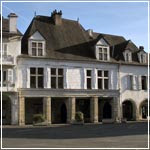 Nay, France. Home of Pedro Sacaze, a wealthy wool merchant of the 1500s.
Nay, France. Home of Pedro Sacaze, a wealthy wool merchant of the 1500s. When we visited the medieval town of Nay across the Pyrenees in France, I got to explore the home of an Aragònese merchant, Pedro Sacaze, who got rich off his wool and fabric business and was able to buy himself a noble title and a couple of monasteries with the proceeds. (For those who have read The Girl from Oto—yes, he was the inspiration for Carlo Sacazar.)
All of these elements added complexity and excitement to the story that was blossoming in my mind. I realized merino wool could tie together the characters in my story. The drama and power struggles that were byproducts of the wool trade would add richness to the tale and anchor it in a fascinating historical backdrop. As my original idea for one novel expanded into the Miramonde Series, my research on the wool trade guided many of the plot twists and gave me some of my best ideas.
When I first decided to write these books, I was driven by a desire to shine light on women artists who fell through the cracks of art history. I never dreamed that something as humble as wool would be the source of so much inspiration, too. That’s what I love about travel—it sparks my creativity like nothing else. I can’t wait to find out what history has in store for me on my next adventure.
The Girl from Oto

A Renaissance-era woman artist and an American scholar. Linked by a 500-year-old mystery…
The secrets of the past are irresistible—and dangerous.
1500: Born during a time wracked by war and plague, Renaissance-era artist Mira grows up in a Pyrenees convent believing she is an orphan. When tragedy strikes, Mira learns the devastating truth about her own origins. But does she have the strength to face those who would destroy her?
2015: Centuries later, art scholar Zari unearths traces of a mysterious young woman named Mira in two 16th-century portraits. Obsessed, Zari tracks Mira through the great cities of Europe to the pilgrim’s route of Camino de Santiago—and is stunned by what she finds. Will her discovery be enough to bring Mira’s story to life?
A powerful story and an intriguing mystery, The Girl from Oto is an unforgettable novel of obsession, passion, and human resilience.
Excerpt
Autumn, 1484Castle Oto, AragónElena
Like the breath of an angry god, the wind streamed over the mountains from the north and slammed into the castle. The balcony shutters bucked and heaved, straining against the iron latches that held them in place. To Elena’s ears, the sound was the hollow clacking of bones.
Wind goes where it wants, she thought, finding the source of a draft with her fingertips. She closed her eyes and imagined herself in the forest, where brittle leaves swirled in unruly flocks and golden-eyed owls blinked in the high branches of oaks.
A faint moan rose from across the room.
Elena straightened up, squared her shoulders. The sooner they got on with it, the sooner she could escape these walls. She rolled up a small woolen rug and wedged it against the base of the shutters, muffling the rattle. Then she padded across the thick Moorish rugs to the great bed and pulled aside the drapes.
The young woman lay curled on her side. In the candlelight, it was difficult to pick out details, but Elena had dressed and undressed this body so many times that she did not need the aid of the sun to understand the predicament. The woman—still a girl, really—was built like a snow finch. Her belly was far too large for her bony frame. For months, Elena had traced its bulbous arc with her fingertips, measuring the swell of it, prodding the taut skin. The likely explanation was not a giant, but twins, and for a first birth that often meant catastrophe.
She dipped a cloth into a copper pot of water that sat on the floor by the bed. With practiced movements she bathed the woman’s pale limbs, smoothed back her tangled hair, massaged lavender oil into her skin.
“My lady, the baby can’t wait any longer.”
Silence.
She raised her voice. “Lady Marguerite! There’s more yet to do. Rouse yourself!”
Pick up your copy of The Girl from Oto Amazon • Kobo • iBooks • Nook.
Amy Maroney
 Amy Maroney lives in the Pacific Northwest with her family. She studied English literature at Boston University and public policy at Portland State University, and spent many years as a writer and editor of nonfiction before turning her hand to historical fiction. She’s currently obsessed with pursuing forgotten women artists through the shadows of history. When she’s not diving down research rabbit holes, she enjoys hiking, drawing, dancing, traveling, and reading. She’s the author of The Girl from Oto and Mira’s Way, the first two books in the Miramonde Series. The third book in the series will be published later in 2019. To receive a free prequel novella to the series, join Amy’s readers’ group at www.amymaroney.com. You can find her on Twitter @wilaroney, on Instagram @amymaroneywrites, and on Facebook.
Amy Maroney lives in the Pacific Northwest with her family. She studied English literature at Boston University and public policy at Portland State University, and spent many years as a writer and editor of nonfiction before turning her hand to historical fiction. She’s currently obsessed with pursuing forgotten women artists through the shadows of history. When she’s not diving down research rabbit holes, she enjoys hiking, drawing, dancing, traveling, and reading. She’s the author of The Girl from Oto and Mira’s Way, the first two books in the Miramonde Series. The third book in the series will be published later in 2019. To receive a free prequel novella to the series, join Amy’s readers’ group at www.amymaroney.com. You can find her on Twitter @wilaroney, on Instagram @amymaroneywrites, and on Facebook.
Published on April 03, 2019 22:00
Join #HistoricalFiction author, Gareth Griffith, as he takes a look at Celtic Neighbours in the Early Middle Ages: The Irish and the Welsh @garethgriffith_
Celtic Neighbours in the Early Middle Ages: The Irish and the WelshBy Gareth Griffith
A book I can recommend is A New History of the Irish in Australia by Elizabeth Malcolm and Dianne Hall. One of the many issues addressed is the question of race, specifically the pseudo-scientific eugenic debates about racial divisions and categorisations that lasted from the mid-19th century to the Second World War. As Malcolm and Hall show, the Irish and the Celts generally did not fare well in these debates, representing “a racially inferior variety of whiteness.” (Malcolm and Hall, p 108) In the era of “White Australia”, an Antipodean contribution to this pseudo- science was the book Non-Britishers in Australia by Jens Sorensen Lyng, published by Melbourne University in 1927 (and republished in 1935). A Dane by origin, Lyng placed the Nordic race at the top of the European racial pyramid, to which the English, Scots and Protestant Irish were said to belong; while the “Catholic Irish and Welsh” were said to represent the inferior Mediterranean race, in company with Spaniards, Greeks, Jews and others. The whole enterprise is of course riddled with dangerous absurdity. Providing a flavour of this, Malcolm and Hall observed:
Lyng seemed quite comfortable with treating the Catholic Irish as ethnically “British”, while at the same time claiming that they belonged to an entirely different racial category from the British, an inferior one. (Malcolm and Hall, p 111)
I found myself reading this sorry tale from a particular perspective, a Welsh one. It set me thinking about the word “British”, which derives from the “Britons,” the name the people we now call the Welsh once gave themselves – Welsh meaning “foreigner” in Anglo-Saxon. There’s a bit of irony somewhere in there. There may be a bit more when we consider that Scots (Scotti) was what the Romans called the Irish who then passed it on the country we now call Scotland. More generally, the comment made by Malcolm and Hall also set me thinking about the relationship between the Welsh and the Irish, not always an easy one in modern times, as discussed in a recent article by Caoimhin De Barra in The Irish Times.
Indeed, like many near neighbours the Welsh (formerly the Britons) and Irish have not always got along. According to one theory, the names by which the Irish identify themselves, Gael and their language as Goidelic, derive from the Welsh “Gwyddel”, or its Brittonic equivalent, a word meaning “raiders” or “wild men.” (JP Mallory, p 250) Now that isn’t complimentary, so why the Irish would have chosen to identify themselves in this way is unclear. Perhaps we should be looking to alternative theories. All the same, seen from the standpoint of the Britons, the fact that they appear to have looked upon the Irish as raiders or wild men suggests something about the tetchy relationship between the two neighbours.
Before going any further, I should acknowledge my “interest” in this subject. In my novel Glass Island, set in the west of Britain at the end of the 6th century, the relationship between the Britons and the Irish is played out in several contexts. Two characters in the story, the chieftains of Caer Gloui (Gloucester) and Caer Ceri (Cirencester), are said to be the sons of an Irish slave-woman, captured during an Irish raid deep into the territory of the Britons. In the novel, the brothers fight alongside the Britons at the fateful battle of Dyrham in AD 577. On the other hand, the conflict between the Irish and the Britons is portrayed in a raid by Irish pirates on a region in the south-west, now in Devon, and the subsequent efforts of the king of Dyfneint/Dumnonia to drive them out.
Historically, there is no doubt that with the departure of the Romans, the Irish took the opportunity to raid all along Britain’s western seaboard, from Scotland to Cornwall. (TM Charles-Edwards, chapter 4) With the exception of the Pictish north, all that seaboard was at the time inhabited by the Britons, from the area around Dumbarton to Land’s End. In Wales specifically, the Irish were more than mere raiders, establishing kingdoms of their own, in Dyfed in the south-west and in the Lleyn Peninsula (which takes its name from the “Men of Leinster”). As an aside, it is interesting to note that in our earliest map of Europe by Ptolemy, several of the tribal names in Ireland appear to be Brittonic (P Celtic), not Goidelic (Q Celtic). These included the Gagganoi who were also found across the Irish Sea, with Ptolemy designating the Lleyn Peninsula as the “headland of the Gangani.” (JP Mallory, p 254) Like football in 1996, were the Gagganoi coming home in the post-Roman era? But that is an aside. In that era, the Irish influence was also found far inland, along what is now the English border, in the kingdom of Brycheiniog. According to TM Charles-Edwards, “In the early tenth century, its capital was an artificial island on Llangors Lake – namely a crannog, a form of fortification characteristic of Ireland and Scotland.” (TM Charles-Edwards, p 20)
Indeed, overcoming the threat and reality of these incursions served as a basis for the foundation mythology of the kingdom of Gwynedd in north-west Wales. The story is that, in the 5th century, a man called Cunedda and his many sons came down from Mannaw Gododdin (around modern-day Edinburgh) to drive out the Irish. As a matter of history, the truth of that account is doubted; it is looked upon as propaganda invented by the royal house of Gwynedd. But that is not to say that the underlying issue of Irish incursion was not real enough. The historical truth may be more prosaic, where the Irish settlers came to be incorporated into the native society. In fact, it is argued that it is much more likely that “Gwynedd was founded by the Irish, or at least in a very close alliance with them,” with the Cunedda “legend telling the opposite of the truth.” Interestingly, an inscription on a pillar-stone from this period, the last reference to the Ordovices, the Brittonic tribe of north-west Wales in Roman times, refers to a man with an Irish name – Corbalengus. (TM Charles-Edwards, chapter 4)
It wasn’t all a matter of piracy and conflict therefore. There is of course the small matter of Christianity and the early Celtic Church. If the Britons gave Ireland nothing else, they did at least cough up a man called Patrick, who was almost certainly of Romano-British origin. More than that, with the spread of Christianity to Ireland, close links developed between the various limbs of what might be loosely called the Celtic Church. In the past, the two societies must have shared common belief systems, founded on the mythologies of the Celtic world. From the 6th century on, it was the common bond of Christian belief that drew them together. Not only were they united in belief against the paganism of the incoming Anglo-Saxons, the Irish and the Britons also held out against the Roman Easter. By 632/3, those who still refused to conform to the Roman Easter could be portrayed by Cummian as “an insignificant group of Britons and Irish who are almost at the end of the world and, if I may say so, but pimples on the face of the earth.” (TM Charles-Edwards, p 240)
Close links between centres of learning in Wales and Ireland would remain up until the Viking age, only to decline thereafter. Before then, with the lead in Christian teaching passing from the Britons to the Irish, a source of divergence developed between Welsh and Irish Christianity. The issue was the evangelising of their new and powerful pagan neighbours, the Anglo-Saxons. By the time Bede was writing in the 8th century, whereas the Britons had refused to have any part in such work, the Irish on the other hand had played an important role in converting the Anglo-Saxons to Christianity. As Alexander Murray has observed, the Britons were Bede’s
“unchosen race” – in Bede’s own words, they were “obdurate and crippled by their errors.” (Bede, p 321)
That is to adopt an English perspective, which it must be said colours everything that followed after the 5th century. The coming of the Anglo-Saxons altered forever the geo-political landscape of the British Isles. There are many different versions of exactly how that alteration occurred. In my novel Glass Island, for the Britons of the west there was a real and present danger right there on their doorstep, something akin to an existential threat. That is one version of events. For the Irish, the same did not apply – not yet.
When I read the collection of Welsh stories called The Mabinogion I am struck by the intimate connections between Wales and Ireland, the coming and going between them, not always peaceful but consistently close in ties of culture and language. It may be that the two peoples have enjoyed the longest unbroken relationship in Western Europe. But with the waning of the Middle Ages, so that relationship lost its old intimacy. Despite common interests in language, that intimacy is unlikely to be regained. As Dylan – the singer not the character from The Mabinogion – said, “You can always come back but you can’t come back all the way.”
Reading
A New History of the Irish in Australia by Elizabeth Malcolm and Dianne Hall, New South Publishing, 2018
“Celts divided by more than the Irish Sea” by Caoimhin De Barra, The Irish Times, 24 November 2018
The Origin of the Irish by JP Mallory, Thames and Hudson, 2015
Wales and the Britons, 350 to 1064 by TM Charles-Edwards, Oxford University
Press, 2014.
“Bede and the Unchosen Race,” by Alexander Murray, in Power and Identity in the Middle Ages: Essays in Memory of Rees Davies edited by Huw Pryce and John Watts, Oxford University Press 2007
Bede, Ecclesiastical History of the English People, Penguin Classics, 1990
Glass Island
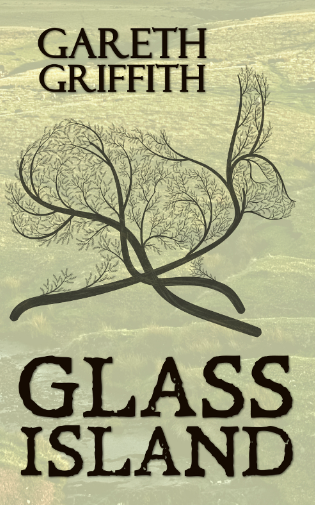
AD 576. A time of upheaval for the people of the Summer Land – the Saxons push further and further westward, a new religion supplants the old, unexpected alliances are formed and deadly rivalries fester – son against father, brother against brother.
Eleri Gwir, the daughter of a chieftain, speaks only the truth – and one thing she knows is that war is coming and that a reckoning awaits her people.The Red Cloaks of Caer Baddan, the last remnant of the Roman legions on British soil, represent hope for Eleri and for all the Summer Land. And their leader Macsen represents something else for Eleri herself – new possibilities, new horizons to explore.
As the decisive battle between the Britons and the Saxons draws nearer, Eleri and her people must decide what their role will be in this story.This rich and compelling novel brings to vivid life a moment of transformation that shaped the Britain we know today.
Amazon
Gareth Griffith
 Gareth Griffith was born in Penmaenmawr, North Wales, and now lives in Sydney, Australia with his wife Sue.
Gareth Griffith was born in Penmaenmawr, North Wales, and now lives in Sydney, Australia with his wife Sue.His career has encompassed teaching, research and writing, including many years working as the manager of research for the parliament of New South Wales. He has a PhD from the University of Wales. His academic publications include a study of George Bernard Shaw's politics, published by Routledge, and several publications on the study of parliament.
These days, when Gareth isn’t writing, he enjoys reading, music, dark Scandi film and TV, and Dark Age Britain. Glass Island is his first novel.
Published on April 03, 2019 01:07
April 2, 2019
Check out Historical Romance author, Ruth Kaufman, fabulous Wars of the Roses Brides Trilogy #HistoricalRomance #WarOfTheRoses @RuthKaufman
Wars of the Roses Brides TrilogyBy Ruth Kaufman

This trilogy contains three acclaimed full-length medievals set in England during what we now call the Wars of the Roses:
At His Command
 1453
1453Can she defy her king for love?
What’s a lady to do when the king commands her to wed How can she follow the king's command when she's a scribe for his rival? How can she marry another man when she's falling in love with Nicholas?
Follow Your Heart
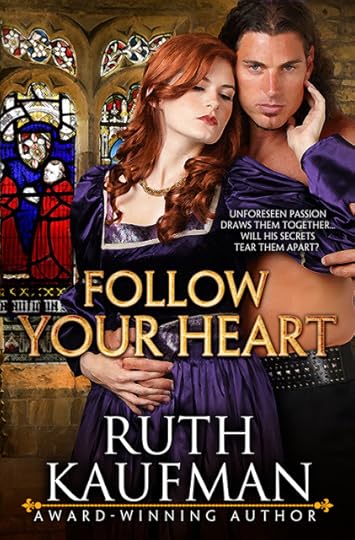
1460
A glazenwright needs help to save her glass-painting studio from ruin. A knight trying to regain his family’s estates needs an heir. When irresistible attraction makes their marriage of convenience inconvenient, will his dangerous secrets keep them from following their hearts?
The Bride Tournament
1462
So she doesn’t have to marry the new earl, Lady Eleanor de la Tour holds a bride tournament to find him a better bride. Who will win his hand in marriage...and his love?
Amazon UK • Amazon US
Ruth Kaufman
 -->
--> Ruth Kaufman’s Wars of the Roses Brides trilogy (AT HIS COMMAND, FOLLOW YOUR HEART and THE BRIDE TOURNAMENT) reached #1 historical romance on Amazon in the US, Canada and Australia. Her romantic comedy MY LIFE AS A STAR is the standalone prequel to MY LIFE AS AN EXTRA. Accolades include 2016 Booksellers' Best Award double winner (Best Historical and Best First Book) and Romance Writers of America® Golden Heart® winner.
Ruth is also an on-camera and voiceover talent with a J.D. and a Master's in Radio/TV. Credits include independent feature films, short films, web series, national TV commercials and thousands of voiceovers. She presents workshops for authors and actors and is a comedic storyteller.
Connect with Ruth: Website • Facebook • Facebook: Ruth Kaufman Actor & Author • Twitter • Instagram • Amazon Author Page.
Published on April 02, 2019 23:00
April 1, 2019
Join me in conversation with #Historica Fiction author, Chrystyna Lucyk-Berger #interview #mustread @ckalyna
Join me in conversation with Historical Fiction author, Chrystyna Lucyk-Berger.

Please give a warm Coffee Pot Welcome to Historical Fiction author, Chrystyna Lucyk-Berger. Chrystyna could you tell us a little about yourself?
I grew up in the culture-rich neighbourhood of Northeast Minneapolis (Minnesota, USA) and, for as long as I can remember, always knew I would live elsewhere, specifically abroad. For the last 19 years, I’ve been living in western Austria. It’s a very long story as to how I got here, but I was nursing my travel bug for one. It is because of that curious nature of mine, that thirst for adventure and always looking to see what was around the next corner, that I entered the realm of historical fiction.

I adore the Reschen Valley series, can you tell us what inspired you to write it?
Imagine driving south over an alpine pass, crossing from Austria into Italy. You might expect Italian restaurants, Italian signs, and Italian architecture. But that’s not what happens. It still looks like the Austrian Tyrol with a few Italian names but the German language is very present.
Keep driving, because here it comes: spread out before you, an unbelievably beautiful reservoir nestled into the horizon and spanning some 4 miles. The sight of that aquamarine water takes your breath away. You pass the first town and quickly come upon the next one called Graun / Curon Venosta. And then there it is. Off to the right, some 50 feet from the lakeshore, is a fully intact medieval church tower rising straight out of the water. This is the setting of the Reschen Valley series.

I had to develop my German a lot before I could become an effective detective and find out what the heck happened. It took me almost five years to get to that point. The deeper I went, the more mysterious and thrilling the story was becoming, especially in regard to how the reservoir was built. I was making two or three trips a year there, spending a lot of time in the province and getting to know two cultures: the Austrian Tyrolean one and the northern Italian one.
By the time I visited the Reschen Lake reservoir for the tenth time, a whole slew of characters had risen above its surface: a young farmer woman, a sassy innkeeper, an Italian engineer, a German carpenter, a dog. A Fascist colonel. They clambered into my Nissan Micra and never let go.
It must be such an inspirational place. Dare I ask, what were the challenges you faced in researching this period of history?
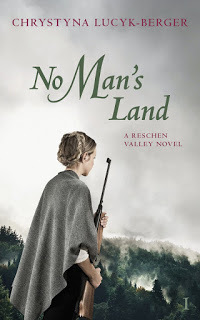 My journey in writing what will be five novels spanning 35 years, required steering around many a conundrum. First, how far beneath the strata of my two cultures must I go before I can feel confident about creating a semi-fictitious world and still do the cultures justice? I could never presume to know or understand enough than that which lays beneath the first few layers. I will always be an outsider writing from an outsider’s perspective. And I feel that has its advantages.
My journey in writing what will be five novels spanning 35 years, required steering around many a conundrum. First, how far beneath the strata of my two cultures must I go before I can feel confident about creating a semi-fictitious world and still do the cultures justice? I could never presume to know or understand enough than that which lays beneath the first few layers. I will always be an outsider writing from an outsider’s perspective. And I feel that has its advantages. 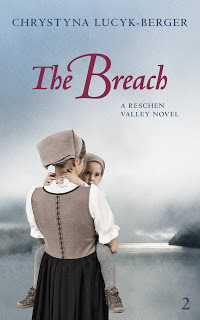 Further, I’m writing the books in English with characters who would normally speak German and/or Italian. It’s thrilling to have this much fodder for conflict: cultural clashes, misunderstandings, plays on words. I am also, however, acutely and painfully aware that my ability to play on those in depth are limited if my audience is an English-speaking or English-reading audience. This has caused me to experiment in creating a world that is universally understandable. The trick was to have enough of both cultural aspects and unique language that, should these novels ever be translated into German or Italian, they would not feel watered down to the native population, or even alien. I’d lose credibility like that. As a matter-of-fact, we’re addressing those very issues with a Tyrolean publisher right now.
Further, I’m writing the books in English with characters who would normally speak German and/or Italian. It’s thrilling to have this much fodder for conflict: cultural clashes, misunderstandings, plays on words. I am also, however, acutely and painfully aware that my ability to play on those in depth are limited if my audience is an English-speaking or English-reading audience. This has caused me to experiment in creating a world that is universally understandable. The trick was to have enough of both cultural aspects and unique language that, should these novels ever be translated into German or Italian, they would not feel watered down to the native population, or even alien. I’d lose credibility like that. As a matter-of-fact, we’re addressing those very issues with a Tyrolean publisher right now. And then there was the question of taking sides in the conflict. I made the decision to explore all aspects of this story, all its arguments, and objectives. It is not my job to illustrate who is right and who is wrong in this conflict and I don’t think it’s realistic anyhow. Once again, I made conscious decisions to create three-dimensional characters with all their flaws and strengths, with all their motivations to do good or, in worst case scenarios, evil. I did not want to make this conflict my conflict, though.
And then there was the question of taking sides in the conflict. I made the decision to explore all aspects of this story, all its arguments, and objectives. It is not my job to illustrate who is right and who is wrong in this conflict and I don’t think it’s realistic anyhow. Once again, I made conscious decisions to create three-dimensional characters with all their flaws and strengths, with all their motivations to do good or, in worst case scenarios, evil. I did not want to make this conflict my conflict, though. In the end, I set out to write a gripping story with characters readers can engage with. While uncovering one of the least known histories in western Europe, I also discovered that there is a warning in those pages that we, today, must also heed.
Well, I think you did a magnificent job! Did I mention I love your series?! There are many books about the interwar period in Europe. Can you tell us three things that set your series apart?
1.) I’m going to bet my firstborn that the majority of the readers here have never heard of the Tyrolean-Italian conflict. So, right there, I’m introducing you to a new culture, a new country, a whole new historical aspect to the interwar period in Italy, and Germany/Austria.
2.) As mentioned in the previous question, my writing focuses not just on the relationships, the story and the plot, but reveals how communication impacts those relationships: the misunderstandings caused, the conflicts that arise, or—on the flip-side—the connections made, and the resolutions inspired despite cultural clashes and language barriers.
3.) One more thing that might set my novels apart is the land itself is a character. I have to explain this a little: back when I was drafting the first two books, I took an online course with Faber and Faber. My editor was Tom Bromley then. As we were discussing my manuscript, he said, “Chrystyna, I think you need to write this so that the valley, that whole land, is a character in your book. We have to feel for it. We have to have a tie to it, a relationship to it, as readers, and feel empathy for it.” I thought, “wow…okay.” I’m a huge outdoor enthusiast and have a reverent relationship to nature. One of the reasons that I love South Tyrol is because it truly is one of the most magnificent and spectacular regions of the world for nature, landscape, climate… it’s got mountains, valleys, rivers, lakes, vineyards, apple orchards, centuries-old chapels and frescoes, castles on every ridge…it’s truly, truly special. You won’t find any other place like it. And Tom was right—I had to make that into a character. I had to get my readers to care about it, at the very least, as much as I did. I had to get readers to understand that bind to the land Katharina and her valley have.
I knew I had succeeded when a book review popped up and stated exactly that. “Even the land is a character in this novel.” I was delighted to be able to send Tom the screenshot of that one!
What are you currently working on?
Book four! Its working title is called The Option and it takes place just a couple of months after Bolzano. It’s 1938, and the Anschluss has Mussolini up in arms (he’s really ticked off with Hitler), and my anti-hero Angelo is trying to get into parliament to make a difference, to really help the Reschen Valley folk. Only problem is, he’s a member of the Fascist party—has to be—and he is once again up against things that are bigger than he can chew. But, I’m excited. This is Angelo’s turning point. Up until this time, he’s had a serious struggle with himself and his development. We also get to follow Annamarie, after she has fled the valley and disappeared to Innsbruck. She’s stuck in the Third Reich now, pursuing her dream of becoming an actress. I’m really excited about her story—when I outlined it, she was already taking me down twists and turns and dark labyrinths when WW2 breaks out. Her mother, Katharina—my steady, sweet-natured protagonist—is also going to come up against some very big demons and here, in this part, we will see a totally different side to her. She’s more mature, less idealistic, more straightforward and hardened. And she’s a lion. When fascist ideologies from both the Third Reich and Italy threaten to permeate her household, she takes a firm stance with her sons, quite possibly at the cost of losing them both. To make matter worse, when Hitler and Mussolini come up with a plan to rid themselves of the South Tyrol question once and for all, it will be a heavy blow to Katharina and her beloved valley. The crack in their community is going to fissure and start breaking them all apart…

She wants her home. He wants control. The Fascists want both.1920. Former Austrian Tyrol.When Katharina Thaler, a young Tyrolean farmer, finds a wounded Italian engineer in the mountains of the Reschen Valley, her decision to save his life thrusts both of them into a labyrinth of corruption, prejudice and greed.Angelo Grimani, a civil engineer, knows the details of a project that may destroy Katharina’s valley. Not in favour of it himself, he returns home to fend off the forces that envision the biggest reservoir in Italy, headed by Angelo’s own father.As the Tyroleans gear themselves to fight for their land, the Fascist party gathers power and momentum. Katharina and Angelo must each decide what to protect: love or country?Dive in and discover the gripping saga based on a history you never knew. This box set contains the first three of six books: No Man’s Land: Part 1, The Breach: Part 2, The Smuggler of Reschen Pass: The Prequel and bonus material including, From Jutta’s Kitchen: 12 South Tyrolean Recipes to bring the Reschen Valley series closer to home. Save now on the regular individual retail price!With an average of 4.25 Stars on Goodreads, Amazon and Bookbub, you'll want to sink your teeth in.
Pick up your copyKindle • Books2Read
 Highly Recommended — The Coffee Pot Book Club.
Highly Recommended — The Coffee Pot Book Club.Chrystyna Lucyk-Berger
 Chrystyna Lucyk-Berger is an American author living in Austria. Her focus is on historical fiction now. She has been a managing editor for a publishing house, has worked as an editor, and has one several awards for her travel narrative, flash fiction and short stories. She lives with her husband in a “Grizzly Adams” hut in the Alps, just as she’d always dreamed she would when she was a child.
Chrystyna Lucyk-Berger is an American author living in Austria. Her focus is on historical fiction now. She has been a managing editor for a publishing house, has worked as an editor, and has one several awards for her travel narrative, flash fiction and short stories. She lives with her husband in a “Grizzly Adams” hut in the Alps, just as she’d always dreamed she would when she was a child.Connect with Chrystyna: Website • Facebook • Twitter.
Published on April 01, 2019 23:00
#BookReview — The Fourth Courier, by Timothy Jay Smith #HistoricalFiction #NewRelease @TimothyJaySmith
 The Fourth CourierBy Timothy Jay Smith
The Fourth CourierBy Timothy Jay Smith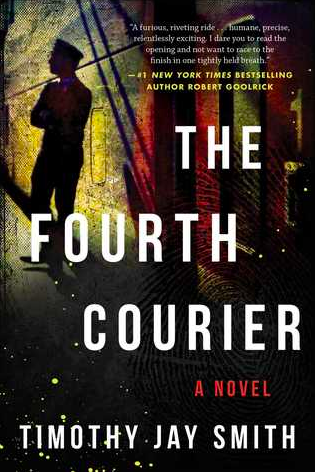
For International Espionage Fans of Alan Furst and Daniel Silva, a new thriller set in post-Soviet era Poland.
It is 1992 in Warsaw, Poland, and the communist era has just ended. A series of grisly murders suddenly becomes an international case when it's feared that the victims may have been couriers smuggling nuclear material out of the defunct Soviet Union. The FBI sends an agent to help with the investigation. When he learns that a Russian physicist who designed a portable atomic bomb has disappeared, the race is on to find him—and the bomb—before it ends up in the wrong hands.
Smith’s depiction of post-cold war Poland is gloomily atmospheric and murky in a world where nothing is quite as it seems. Suspenseful, thrilling, and smart, The Fourth Courier brings together a straight white FBI agent and gay black CIA officer as they team up to uncover a gruesome plot involving murder, radioactive contraband, narcissistic government leaders, and unconscionable greed.

“Are you suggesting someone is trying to put together an atomic bomb?”
The dissolution of the Soviet Union in 1991, brought about many opportunities — for some. Since the dissolution, post-communist Poland had become a freeway for unlawful trafficking. However, when three bodies turned up — each showing signs of torture and a bullet in the heart, alarm bells started to ring. This was not the work of a serial killer. This was the work of something much worse.
With the disappearance of a Russian physicist, the International Community has to get involved, for this physicist has designed a portable atomic bomb. It is feared that this bomb will find its way into the wrong hands and if it does, the consequences do not bear thinking about.
The race is on to find the killer, and hopefully, the bomb — before it is too late.
From the banks of the Vistula to the glamour of the Ambassador’s residence, The Fourth Courier by Timothy Jay Smith is one of the most tense, powerful and utterly compelling historical thrillers that I have ever read.
This action-packed, adrenaline induced, thriller of a story grabbed me from the opening sentence and did not let up until the last first stop, by which time I finally managed to catch my breath and utter “Wow! What a book!” I was immediately drawn into the world that Smith has created. It is a world filled with danger and uncertainty. It is very obvious that Smith has spent many hours researching this period in Polish and Russian history.
Smith has chosen to tell his story from both sides, which I thought was refreshing. So not only do we get to follow the “good guys” we also get to follow those who want the bomb for their own sordid purposes. I thought this approach worked incredibly well.
Smith certainly has a novelist eye for human detail, and nothing is beyond his telling. We meet some very degenerate individuals through the course of this novel and one very memorable narcissistic. Smith, it seems, has a visceral understanding of what makes a good villain. Likewise, Smith has created some really notable protagonists. I particularly liked FBI agent, Jay Porter. Porter is a wonderfully delightful character who I immediately took to. His relationship with Lilka gave his character creditability, and his failure to find a decent cup of coffee was a source for some light entertainment. Lilka was another character that I thoroughly enjoyed reading about. Her situation is precarious, to say the least. However, she is a very strong and courageous woman, a good match for Jay. There is a rather large cast of characters in this book, and they all help to drive the story forward. Sometimes, with such an extensive cast, the reader can become confused, but not so in this case. Smith has a masterful control over them all, and as they have such distinct characteristics, it was easy to keep up with whom they all were.
There can be no doubt that Smith writes with a great deal of imagination and energy. The Fourth Courier is one of those books that is very hard to put down. This is the kind of novel that will keep you turning the pages into the early hours of the morning.
The Fourth Courier has everything a good historical mystery thriller should have. It is full of cliff-hanger tension. It has enough plot twists to satisfy the most hardened of critics, and it has a cast of unforgettable characters.
I Highly Recommend.
Review by Mary Anne Yarde.The Coffee Pot Book Club.
Pick up you copy ofThe Fourth Courier
Amazon UK • Amazon US
Timothy Jay Smith
 Raised crisscrossing America pulling a small green trailer behind the family car, Timothy Jay Smith developed a ceaseless wanderlust that has taken him around the world many times. Polish cops and Greek fishermen, mercenaries and arms dealers, child prostitutes and wannabe terrorists, Indian Chiefs and Indian tailors: he hung with them all in an unparalleled international career that saw him smuggle banned plays from behind the Iron Curtain, maneuver through Occupied Territories, represent the U.S. at the highest levels of foreign governments, and stowaway aboard a 'devil's barge' for a three-days crossing from Cape Verde that landed him in an African jail.
Raised crisscrossing America pulling a small green trailer behind the family car, Timothy Jay Smith developed a ceaseless wanderlust that has taken him around the world many times. Polish cops and Greek fishermen, mercenaries and arms dealers, child prostitutes and wannabe terrorists, Indian Chiefs and Indian tailors: he hung with them all in an unparalleled international career that saw him smuggle banned plays from behind the Iron Curtain, maneuver through Occupied Territories, represent the U.S. at the highest levels of foreign governments, and stowaway aboard a 'devil's barge' for a three-days crossing from Cape Verde that landed him in an African jail.These experiences explain the unique breadth and sensibility of Tim's work, for which he's won top honors. Fire on the Island won the Gold Medal in the 2017 Faulkner-Wisdom Competition for the Novel. He won the Paris Prize for Fiction (now the Paris Literary Prize) for his novel, A Vision of Angels. Kirkus Reviews called Cooper's Promise "literary dynamite" and selected it as one of the Best Books of 2012. Tim was nominated for the 2018 Pushcart Prize. His screenplays have won numerous competitions. His first stage play, How High the Moon, won the prestigious Stanley Drama Award. He is the founder of the Smith Prize for Political Theater.
Connect with Timothy: Website • Twitter • Linkedin.
<!-- /* Font Definitions */ @font-face {font-family:"Cambria Math"; panose-1:2 4 5 3 5 4 6 3 2 4; mso-font-charset:0; mso-generic-font-family:roman; mso-font-pitch:variable; mso-font-signature:-536870145 1107305727 0 0 415 0;} @font-face {font-family:Calibri; panose-1:2 15 5 2 2 2 4 3 2 4; mso-font-charset:0; mso-generic-font-family:swiss; mso-font-pitch:variable; mso-font-signature:-536870145 1073786111 1 0 415 0;} @font-face {font-family:Garamond; panose-1:2 2 4 4 3 3 1 1 8 3; mso-font-charset:0; mso-generic-font-family:roman; mso-font-pitch:variable; mso-font-signature:647 0 0 0 159 0;} @font-face {font-family:Times; panose-1:0 0 5 0 0 0 0 2 0 0; mso-font-charset:0; mso-generic-font-family:auto; mso-font-pitch:variable; mso-font-signature:3 0 0 0 1 0;} /* Style Definitions */ p.MsoNormal, li.MsoNormal, div.MsoNormal {mso-style-unhide:no; mso-style-qformat:yes; mso-style-parent:""; margin:0cm; margin-bottom:.0001pt; mso-pagination:widow-orphan; font-size:12.0pt; font-family:"Calibri",sans-serif; mso-ascii-font-family:Calibri; mso-ascii-theme-font:minor-latin; mso-fareast-font-family:Calibri; mso-fareast-theme-font:minor-latin; mso-hansi-font-family:Calibri; mso-hansi-theme-font:minor-latin; mso-bidi-font-family:"Times New Roman"; mso-bidi-theme-font:minor-bidi;} p {mso-style-noshow:yes; mso-style-priority:99; mso-margin-top-alt:auto; margin-right:0cm; mso-margin-bottom-alt:auto; margin-left:0cm; mso-pagination:widow-orphan; font-size:12.0pt; font-family:"Times New Roman",serif; mso-fareast-font-family:"Times New Roman";} .MsoChpDefault {mso-style-type:export-only; mso-default-props:yes; font-family:"Calibri",sans-serif; mso-ascii-font-family:Calibri; mso-ascii-theme-font:minor-latin; mso-fareast-font-family:Calibri; mso-fareast-theme-font:minor-latin; mso-hansi-font-family:Calibri; mso-hansi-theme-font:minor-latin; mso-bidi-font-family:"Times New Roman"; mso-bidi-theme-font:minor-bidi;} @page WordSection1 {size:595.0pt 842.0pt; margin:72.0pt 72.0pt 72.0pt 72.0pt; mso-header-margin:35.4pt; mso-footer-margin:35.4pt; mso-paper-source:0;} div.WordSection1 {page:WordSection1;} </style> -->
Published on April 01, 2019 22:00
Join #HistoricalFiction author, Elizabeth St.John, as she takes a look at The Shadow Wives: Power, patronage and perquisites in the 17th Century marriage game #History #Stuarts #TowerOfLondon @ElizStJohn
The Shadow WivesPower, patronage and perquisites in the 17thCentury marriage game.By Elizabeth St.John On July 20th, 1615, the six St.John sisters stood proudly commemorated in the lifesize polyptych portrait at St. Mary’s Church, Lydiard Tregoze, Wiltshire. According to Lucy Hutchinson, author of Memoirs of the Life of Colonel Hutchinson, “there were not in those days so many beautiful women found in any family as these”. She went on to say “but my mother was by the most judgments preferred before all her elder sisters, who, something envious at it, used her unkindly.”
 (L to R) Lucy, Barbara, Eleanor, Jane, Anne and Katherine
(L to R) Lucy, Barbara, Eleanor, Jane, Anne and KatherineHer mother was Lucy St.John, the youngest of the six sisters, and one who would perhaps lead the most adventurous life of all of them.
As a generation of women who were central to the Stuart milieu of patronage and influence, the portrait also celebrated their husbands, for at the foot of each woman rests a tablet with the coat of arms of the men they married. And through the lives of their husbands, we can trace the rise in their fortunes and catch glimpses of the informal power they wielded in their respective marriages. Lucy’s lozenge is blank, for although she had met her future husband, Sir Allen Apsley, they were not yet married. And yet, he arguably promoted Lucy to one of the most influential of the sisters, for shortly after the marriage he purchased the office of Lieutenant of the Tower of London, and they moved into The Queen’s House overlooking Tower Green.
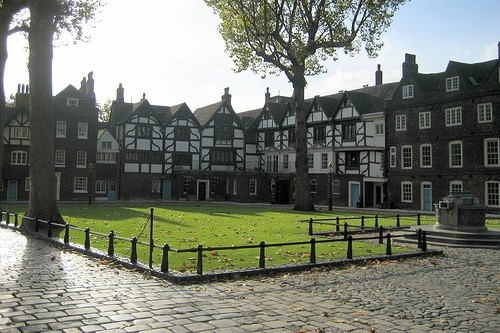 The Queen's House: The Tower of London.
The Queen's House: The Tower of London.For the next thirteen years, Lucy St.John looked after the prisoners and raised her children within the confines of the Tower of London, Sir Allen was generous, and gave her “a noble allowance of 300 for her own private use.” She certainly put this to good use, for her daughter goes on to say “Sir Walter Raleigh and Mr. Ruthin being prisoners in the Tower, and addicting themselves to chemistry, she suffered them to make their rare experiments at her cost, party to comfort and divert the poor prisoners, and partly to gain the knowledge of their experiments, and the medicines to help such poor people as were not able to seek physicians.”
Sir Allen Apsley did not attain his appointment a Tower on his own merit, however. Lucy St.John’s sister, Barbara, married Edward Villiers, the fatherless second son of a Leicestershire squire. However, five years later, his older half-brother, George Villiers, was made Knight of the Garter, after being “discovered” by James I. Once knighted, George Villiers ascended rapidly, a comet at the court of King James with a multitude of relatives and supporters trailing in his tail. One of these was Allen Apsley. According to contemporary court papers, Sir Allen was given the option of securing the lucrative position of Lieutenant of the Tower because of his wife’s relationship to George Villiers, the Duke of Buckingham. For a mere £3,000 (£500,000 in today’s money), the job was his.
 George Villiers, Duke of Buckingham.
George Villiers, Duke of Buckingham.Unfortunately, the close friendship that evolved between Sir Allen and the Duke did not end in harmony. Sir Allen also held the position of Victualler of the Navy, and Buckingham’s frequent forays overseas to engage in foreign wars strained the nation’s finances immensely, and placed a huge personal burden on Sir Allen as he struggled to provision a Navy that was poor on men, ships and supplies. At the time of Buckingham’s assassination in 1628, Sir Allen was almost £100,000 (£9,000,000) in debt, putting his own credit and that of others on the line to support his patron. The money was never recovered, and Lucy and her children were hauled through the courts for decades after his death in 1630 in attempts to recover funds.
Riches and perquisites for the Ladies St.John did not stop here, however. Katherine St.John, the eldest of the sisters, married a gentleman of shrewd business acumen but shaky character, Sir Giles Mompesson. He devised a scheme of licensing inns that enabled his patron – again, the influential Duke of Buckingham – to secure thousands of pounds worth of fines to satisfy his very expensive habit of acquiring Italian artwork. Sir Giles’ method of extracting fines left a lot to be desired and in his resulting prosecution he was forced to leave the country in a hurry. However, no shrinking violet was Katherine, for when the attempt to arrest Sir Giles was made in his chambers, his escape was orchestrated by Katherine, her brother-in-law Sir William St.John, and her half-brother Sir Edward Hungerford. The St.John women were obviously very persuasive.
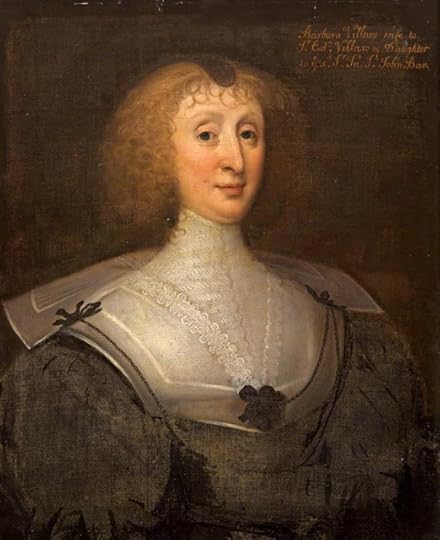 Barbara St.John Villiers
Barbara St.John VilliersAnd what of Barbara, the sister who married Edward Villiers? She, along with her husband, nearly caused the downfall of the Duke of Buckingham through his tacit endorsement and granting of gold and silver thread monopolies. Sir Edward (he was knighted around the same time as George started his rise to fame) was involved in this scheme up to his neck, and when he forced the Attorney General to imprison several gold and silver makers for not paying fees to him, there was an immediate uproar. The House of Commons were out for blood, and although they were told that Buckingham had given his half-brother no encouragement in the matter, the reaction was such that it was felt an example should be made of Buckingham. Monopolists such as George and Edward Villiers were “bloodsuckers of the kingdom and vipers of the commonwealth” and the furore nearly brought down the Duke.
Interestingly, Barbara maintained a secure hold on the gold and silver thread monopolies long after her husband’s death. It is quite possible that income from this lucrative opportunity could have funded the education and lifestyle of her granddaughter, another Barbara Villiers – future Countess of Castlemaine and mistress of King Charles II.
The remaining older sisters, Anne and Jane, appeared to lead fairly quiet lives, although without a doubt they observed the antics of their sisters at Whitehall. However, they were not immune from the influences of court – Anne’s husband Sir George Ayliffe left this rather touching bequest in his will: “…to my dearest and best friend that ever I found in the world, my Ladie Villiers, my dear sister, £20 for a diamond ring, in memories of me her poor brother, who ever truly loved her and honour her even to death…”.
And what of the younger sister, Eleanor? The tablet at her feet reveals she married a distant cousin, Sir William St.John of Highlight, Wales (the same gentleman who arranged the escape of Giles Mompesson). A soldier, as pirate, and a commander of the King’s Ships, Sir William was a good friend of Sir Walter Raleigh, and tragically was instructed by the Duke to arrest him in his final escape attempt before being executed. It is fascinating to contemplate the effort required to survive and prosper during the time this generation of St.John sisters were alive. Not only were the facing the daily threat of contagion, disease and childbirth, they faced the continual challenge of relying on others to look after their interests. Although they had little power in their own right, over and over their names appear in Chancery suits and royal warrants, indicating that at the time, they were considered just as important as their husbands in the lucrative business of handouts and favoritism. Thus, their life must have been an intricate dance where partners changed daily and the steps were never the same. More than four hundred years later we can look back and admire these women for their courage and dexterity.
The Lydiard Chronicles
The Lydiard Chronicles are on sale on Amazon.com as Kindle, Kindle Unlimited and paperbacks. The Lady of the Tower is also on sale at the Tower of London and both paperbacks are available through bookshops.

The Lady of the TowerAmazon
By Love DividedAmazon
Elizabeth St.John
 Elizabeth St.John spends her time between California, England, and the past. A best-selling author, historian and genealogist, she has tracked down family papers and residences from Nottingham Castle, Lydiard Park, and Castle Fonmon to the Tower of London. Although the family sold a few castles and country homes along the way (it's hard to keep a good castle going these days), Elizabeth's family still occupy them - in the form of portraits, memoirs, and gardens that carry their imprint. And the occasional ghost. But that's a different story...Connect with Elizabeth: Website • Facebook • Twitter.
Elizabeth St.John spends her time between California, England, and the past. A best-selling author, historian and genealogist, she has tracked down family papers and residences from Nottingham Castle, Lydiard Park, and Castle Fonmon to the Tower of London. Although the family sold a few castles and country homes along the way (it's hard to keep a good castle going these days), Elizabeth's family still occupy them - in the form of portraits, memoirs, and gardens that carry their imprint. And the occasional ghost. But that's a different story...Connect with Elizabeth: Website • Facebook • Twitter.<!-- /* Font Definitions */ @font-face {font-family:"Cambria Math"; panose-1:2 4 5 3 5 4 6 3 2 4; mso-font-charset:0; mso-generic-font-family:roman; mso-font-pitch:variable; mso-font-signature:-536870145 1107305727 0 0 415 0;} @font-face {font-family:Calibri; panose-1:2 15 5 2 2 2 4 3 2 4; mso-font-charset:0; mso-generic-font-family:swiss; mso-font-pitch:variable; mso-font-signature:-536870145 1073786111 1 0 415 0;} /* Style Definitions */ p.MsoNormal, li.MsoNormal, div.MsoNormal {mso-style-unhide:no; mso-style-qformat:yes; mso-style-parent:""; margin-top:0cm; margin-right:0cm; margin-bottom:8.0pt; margin-left:0cm; line-height:107%; mso-pagination:widow-orphan; font-size:11.0pt; font-family:"Calibri",sans-serif; mso-ascii-font-family:Calibri; mso-ascii-theme-font:minor-latin; mso-fareast-font-family:Calibri; mso-fareast-theme-font:minor-latin; mso-hansi-font-family:Calibri; mso-hansi-theme-font:minor-latin; mso-bidi-font-family:"Times New Roman"; mso-bidi-theme-font:minor-bidi; mso-ansi-language:EN-US;} .MsoChpDefault {mso-style-type:export-only; mso-default-props:yes; font-size:11.0pt; mso-ansi-font-size:11.0pt; mso-bidi-font-size:11.0pt; font-family:"Calibri",sans-serif; mso-ascii-font-family:Calibri; mso-ascii-theme-font:minor-latin; mso-fareast-font-family:Calibri; mso-fareast-theme-font:minor-latin; mso-hansi-font-family:Calibri; mso-hansi-theme-font:minor-latin; mso-bidi-font-family:"Times New Roman"; mso-bidi-theme-font:minor-bidi; mso-ansi-language:EN-US;} .MsoPapDefault {mso-style-type:export-only; margin-bottom:8.0pt; line-height:107%;} @page WordSection1 {size:612.0pt 792.0pt; margin:72.0pt 72.0pt 72.0pt 72.0pt; mso-header-margin:36.0pt; mso-footer-margin:36.0pt; mso-paper-source:0;} div.WordSection1 {page:WordSection1;} </style> -->
Published on April 01, 2019 10:25
Check out the cover for #HistoricalFiction author, Judith Arnopp's, fabulous book — The Beaufort Bride. #HistoricalFiction #Tudors @JudithArnopp
The Beaufort BrideBy Judith Arnopp
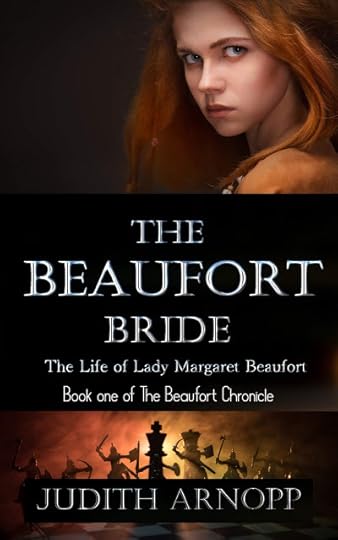
As King Henry VI slips into insanity and the realm of England teeters on the brink of civil war, a child is married to the mad king’s brother. Edmund Tudor, Earl of Richmond, takes his child bride into Wales where she discovers a land of strife and strangers.At Caldicot Castle and Lamphey Palace Margaret must put aside childhood, acquire the dignity of a Countess and, despite her tender years, produce Richmond with a son and heir.While Edmund battles to restore the king’s peace, Margaret quietly supports his quest; but it is a quest fraught with danger.As the friction between York and Lancaster intensifies the 14-year-old Margaret is widowed and turns for protection to her brother-in-law, Jasper Tudor. At his stronghold in Pembroke Margaret gives birth to a son whom she names Henry, after her cousin the king.Margaret is small of stature but her tiny frame conceals a fierce and loyal heart and a determination that will not falter until her son’s destiny as the king of England is secured.
The Beaufort Bride traces Margaret’s early years from her nursery days at Bletsoe Castle to the birth of her only son in 1457 at Pembroke Castle. Her story continues in Book Two:The Beaufort Woman.
Excerpt
In the following excerpt from The Beaufort Bride, Margaret is six months pregnant and has just had word that her husband has been imprisoned in Carmarthen castle and likely to die of pestilence. She persuades Jasper to take her to him.
Another long road. Another jolting, disheartening journey in the litter. Try as I might to persuade him, Jasper is unbending.
“You will ride in the litter or not at all,” he says, attempting to soften his harsh words with a quick smile. Pouting like an unruly child, I gather my cloak about me and clamber into the detested conveyance. I sit bolt upright, simmering with anger for as long as I can bear to. Myfanwy, moonstruck by Jasper’s return, smiles an apology for my behaviour and tries to soothe me.
“The journey will not be so long this time,” she says, “and Jasper is only thinking of your safety, and that of the babe.” She nods toward the dome of my belly and instinctively I put a hand on it, the contact imperceptibly softening my mood.
“I know.” Full of resentment, I look out beyond the looped-back curtain. Mercifully the weather is dry; a chilly bright day, with the sun reflecting on the puddles left by the last few weeks of rain. The blue skies are a teasing reminder of the summer so recently departed. Tomorrow, it will rain again.
Jasper rides at the head of the column. I watch his upright figure, notice how his head continually moves from left to right as he scans the horizon for signs of trouble. He is uneasy, not convinced of York’s promise of safe passage, and his discomfort unnerves me too.
Where the terrain allows, we follow the serpentine trail of the River Tywi, but every so often, to avoid marshy terrain, we are forced to higher ground. As we pass close to Grey Friars, the waterlogged fields about the river are scattered with sheep. At our approach, they throw up their heads in alarm and abandon their grazing to hurry from our path. Myfanwy laughs.
“Look at them. They look like beggars with their grubby woollen fleeces hanging from their backs.”
I smile, but I do not care about sheep. In the distance, I have spied the town gate and beyond it the towers of Carmarthen Castle standing proudly above a loop at the river crossing.
I sit up straighter and try to see ahead, as if expecting Edmund to be waving a greeting from the battlement. But he does not know I am coming; I will be the last person he expects to see.
I watch Jasper ride toward the town gate. He leans from his saddle and exchanges words with the gatekeeper. He takes off his helmet and turns toward me, the wind tussling his hair which, I notice with a sudden pang, is the exact same shade as Edmund’s. His brow is creased and, noting his dour expression, I sense more trouble. My heart sinks as, after a further exchange of words, he turns his horse and rides back to the litter.
He slides from his horse.
“Margaret …” He hesitates, pulls a face and lets out a long breath. “There is pestilence here. I cannot let you travel farther. It isn’t safe.”
A surge of anger such as I have never known consumes me; I can feel it rushing uncontrollably through my body, gathering in my head until I feel it will burst.
“I will not be kept from him!” I hear myself shout. Tears of rage drench my cheeks; my fists are clenched tight, my ears ringing with the sudden stress. My mother would be furious if she witnessed such behaviour, but I am too afraid and too angry to care. Without ceasing my tirade, I swing my legs toward the door.
“I have travelled too far and waited too long to be kept away now. If there is pestilence here, he may need nursing. I will not allow you to keep me from my duty.”
I struggle from the litter and, shrugging Myfanwy’s hand from my shoulder, begin to hurry along the dirt track, determined to travel the rest of the way on foot. I do not get far before my ankle turns on a rut in the road. Concealing the sudden sharp pain, I limp on.
“Margaret!” Jasper, defying all etiquette, strides after me, grabs my arm and forces me to stop. “You are acting like a child. Get back in the litter. I will take you as far as Grey Friars, but there you must wait until I discover the situation at the castle. If it is safe, you can see Edmund tomorrow. For Christ’s sake, think of your son.”
I am always being told to think of my child. I think of little else. I am thinking of him now, in my desperation to liberate Edmund. What will my son be without his father?
Myfanwy adds her argument to Jasper’s, her voice soft and silky with persuasion.
“We can freshen up and rest at the priory. You will feel better tomorrow, my lady, after a night’s sleep. Edmund will prefer to see you calm and … clean.” She casts a glance at my mired skirts.
I pass a hand over my face, knowing I am beaten, knowing they are right. With a sob of both rage and misery, I allow myself to be turned around and bundled back into the hateful litter.
As the horses lurch forward and the swaying of the litter starts up again, I refuse to look at Myfanwy. I resent her alliance with Jasper. Despite my situation, I do not miss the warm looks that pass between them, or the excuses she finds to be with him. She is glad this mischance has befallen my husband because it puts her in the company of her sweetheart.
Another religious house, this time run by the Grey Friars. They greet me cordially, offer what comfort they can and give me lodging in the abbot’s house. The room is comfortable, well furnished, and a welcome fire roars in the grate. Fuelled with resentment toward her, I cruelly send Myfanwy from my presence. It is midnight before I regret it. I pass a lonely, miserable night but I am too stubborn to summon her back, and so I lie awake, staring into the dark.
The child is quiet, his head pressing on my bladder, so I have to get up repeatedly to use the close-stool. Each time I return to the bed, the sheets become rucked into a worse mess and by dawn the blankets look as though a wrestling match has taken place.
“Goodness,” Myfanwy exclaims in the morning when she brings me a tray of victuals to break my fast. “What have you been doing?”
She bears no malice for my hostility the night before and her cheeks are rosy, her eyes bright as if she has passed a restful night. While I stare grumpily at my morning meal, she begins to smooth the sheet and plump my pillows.
“Jasper will be leaving soon, I expect.” She moves to the window and opens the shutters, letting a stream of dirty daylight into the room.
I want to correct her, command her to use his proper title but I am tired, sick and tired of everything and cannot find the strength. I frown at the hump of my raised knees beneath the blanket. There must be something I can do, some action I can take.
I push away the tray and throw off the covers. “Help me get dressed, Myfanwy. I cannot face food this morning.”
Cup in hand, she hovers for a few moments before hurrying to do my bidding. I am mute during my toilette, but all the while she sponges my face her questions fall as swiftly as arrows.
“Why are you in such a hurry? What are you going to do? You don’t mean to defy Jasper, do you, Margaret? Please don’t do anything …”
“Give me that.” I snatch the comb rudely from her hand and begin to drag it through my hair. It catches at the knots, large clumps coming free. “There,” I say. “Now quickly braid it and tuck it under my cap.”
She has no option but to obey me, and I offer no explanation. Ten minutes later, less neat than usual, I am waiting for Jasper to appear in the hall. I hear his approach long before he arrives.
“Margaret.” He stops short, instantly wary as he notices my outdoor clothes and my mulish expression. He tucks his helmet defensively beneath his arm. “What are you doing here?”
I can tell by his voice that he knows my intention, but I raise my chin defiantly before I make an answer.
“I am coming with you. I will not be sent to my chambers like a child. My husband’s life may be in peril and I refuse to sit idly by when it is clearly my duty to be with him.”
“It is too dangerous.” He comes closer, his brow creased with concern. “I have no idea what danger we may be riding into. Do you not care about your child or your own well-being?”
“Of course I do.” I look him firmly in the eye. “I have spent most of the night in prayer asking for God’s guidance as to what I should do. He convinces me my place is at Edmund’s side. Surely, Jasper, you are not so high and mighty as to argue with God?”
Exasperated, he looks at the ceiling, and then back at me.
“By Heaven, Margaret, you could use a spanking.”
I stiffen, outraged at his discourtesy, but as I open my mouth to make a sharp retort, I think I detect a tiny spark of admiration in his eye. I close my mouth again and make no reply as I pull on my gauntlets.
“And I am not spending another moment in that litter. Have a horse made ready for me.” I speak over his shoulder to his steward, but Jasper puts up a hand.
“No, if I have any say in the matter, you will ride with me, my lady, so I can at least try to keep you from harm.”
As he ushers me from the room Ned steps forward, seemingly from nowhere. “My lady, I am coming too.”
A sigh shudders from deep within me. I do not even turn to look him in the eye.
“Don’t be tiresome, Ned. Go and walk Jay in the gardens, make yourself useful.”I turn again but he tags after me.
“Begging your pardon, my lady, but I owe you my life, and if you are going into danger then I am coming with you.” He puts his hand on the dog’s head. “And so is Jay.”
“Oh, for Heaven’s sake, you impossible child. Very well, do as you wish. I revoke all responsibility for you.”
There is no time to argue. I march swiftly away, Jasper at my side telling me I am too soft with the boy. I raise my eyebrows but forebear to comment that he might likewise be too soft with me.
Pick up your copy ofThe Beaufort BrideAmazon
Judith Arnopp
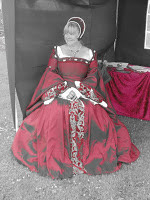
Judith Arnopp is the author of ten historical novels including The Winchester Goose, The Beaufort Chronicle (three book series), The Kiss of the Concubine and A Song of Sixpence. You can find her on Facebook • Twitter • Website • Blog.
Published on April 01, 2019 08:27
March 31, 2019
Historical Fiction author, Mary Anne Yarde, is taking a look at the story behind the nursery rhyme — London Bridge Is Falling Down #History #Vikings #Folklore
London Bridge is falling down…The story behind the nursery rhyme.
By Mary Anne Yarde
We all know the children's nursery rhyme London Bridge is Falling down.
Well, I wonder if you have ever heard this verse...
London Bridge is broken down.Gold is won, and bright renown.Shields resounding,War-horns sounding,Hild is shouting in the din!Arrows singing,Mail-coats ringing,Odin makes our Olaf win!
 Old London Bridge by J. M. W. Turner — Wikipedia.
Old London Bridge by J. M. W. Turner — Wikipedia. Let's take a journey back to the early 11th Century. It is story time, now listen...
The oars of the great Viking longships hardly made any sound as they cut through the water of the River Thames. The mist from the Thames hid their presence and they made good progress. However, as the sun began to rise, so did the mist.

A child rubbed her tired eyes when she thought she saw something that looked like a dragon. Suddenly she realised what she was seeing.
"Vikings," she screamed with fear, as she dropped her basket and ran for home.

Her cry was taken up by others, and King Cnut, whose Father had only recently toppled King Æthelred from the throne, came out with his warriors. Surely Æthelred would not be so foolish as to try and take his kingdom back?
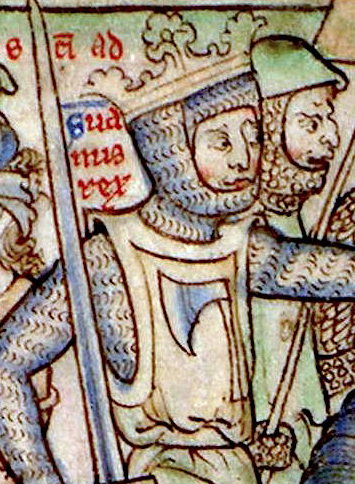 King Sweyn (Cnut's father) invading England 1013 ~ WIkipedia
King Sweyn (Cnut's father) invading England 1013 ~ WIkipedia
Unbeknown to King Cnut, King Æthelred had enlisted the help of the great King Olaf of Norway. King Cnut prayed to God for victory when he spotted an armada of dragon heads coming out of the mist.

"To the Bridge," he yelled. King Cnut knew that if they could hold the Bridge, then they could hold the kingdom. King Æthelred would have to pass under the bridge if he had any chance of winning this battle. King Cnut prayed to God that King Æthelred would keep coming, for he had one heck of a surprise for him.

But, this had once been King Æthelred's kingdom, he knew the territory and he knew this bridge. So he was not at all surprised when he saw that King Cnut had used the bridge to form an impassable blockade.
King Æthelred smiled, it was exactly what he had expected King Cnut to do and he had prepared for such an eventuality. He had instructed King Olaf to build high platforms on the boats. He knew that King Cnut would think that this had been done to protect the rowers, but that was not the reason.
When the dragon heads reached the bridge, King Æthelred and King Olaf's men climbed onto the platforms. They were now on the same level as King Cnut's warriors who were standing on the bridge. King Æthelred had instructed his and King Olaf's men to stand in pairs. One of which would hold a shield and the other a grappling hook.
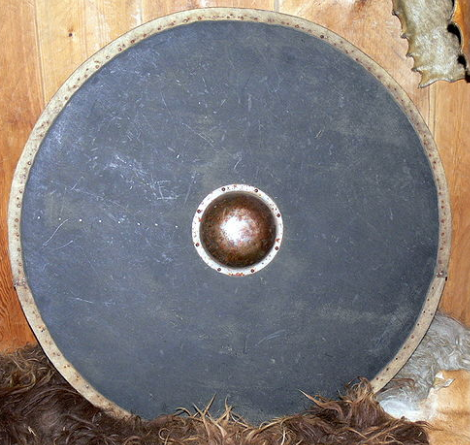 A typical Viking shield ~ Wikipedia
A typical Viking shield ~ WikipediaArrows, rocks, and rubble rained down upon them, but it did not deter the warriors who threw their hooks towards the bridge’s wooden pilings. But they were not trying to moor up, far from it.

King Cnut's released what King Æthelred planned to do and he ordered his men to throw mighty boulders down onto the ships, but it was too late.
King Æthelred gave the order to row back the way they had come. The wood of the bridge’s pilings held strong for a moment. King Æthelred felt a moment of doubt. This wasn't working. But then, God answered his prayers. The wood began to tear as the grappling hooks dug in. London Bridge began to shake.
King Æthelred encourage his mean to heave and to his delight he watched as wood, stone and men fell into the water.
 Æthelred in an early thirteenth-century copy of the Abingdon Chronicle ~ Wikipedia
Æthelred in an early thirteenth-century copy of the Abingdon Chronicle ~ WikipediaA great cheer rose up from the Viking boats. King Æthelred and King Olaf had won. London Bridge had fallen down.
Is there any truth in the story...?
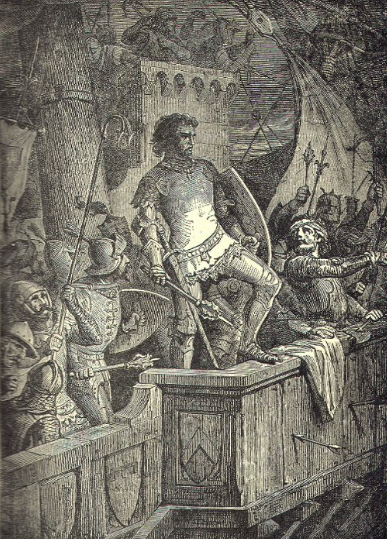 King Cnut defending London Bridge ~ Wikipedia
King Cnut defending London Bridge ~ WikipediaWell, yes! Æthelred the Unready did indeed lose his throne to Sweyn. Æthelred fled to Normandy, but then Sweyn died unexpectedly and his son, Cnut, became king. Æthelred launched an expedition, with the support of Olaf Haraldsson to retake his kingdom. Olaf led a successful attack on London Bridge, and Cnut and his army withdrew from England. Later, Æthelred son, Edmund Ironside, revolted against his father and established himself in the Danelaw. Cnut returned and over the next few months conquered most of England. Cnut won a decisive victory over Edmund at the Battle of Ashingdom (1066) but, so impressed was he with Edmund that he agreed to divide the nation. Edmund took Wessex while Cnut took the whole of the country beyond the Thames. Edmund died a few weeks later, and Cnut became the first Viking King of England.
References:
Unless otherwise stated, all images can be found on Pixabay.
The Du Lac Prophecy
(Book 4 of The Du Lac Chronicles)

Two Prophesies. Two Noble Households. One Throne.
Distrust and greed threaten to destroy the House of du Lac. Mordred Pendragon strengthens his hold on Brittany and the surrounding kingdoms while Alan, Mordred’s cousin, embarks on a desperate quest to find Arthur’s lost knights. Without the knights and the relics they hold in trust, they cannot defeat Arthur’s only son – but finding the knights is only half of the battle. Convincing them to fight on the side of the Du Lac’s, their sworn enemy, will not be easy.
If Alden, King of Cerniw, cannot bring unity there will be no need for Arthur’s knights. With Budic threatening to invade Alden’s Kingdom, Merton putting love before duty, and Garren disappearing to goodness knows where, what hope does Alden have? If Alden cannot get his House in order, Mordred will destroy them all.
Amazon US • Amazon UK • Amazon CA
Read the multi award-winning
series for FREE with


Mary Anne Yarde
 Mary Anne Yarde is the multi award-winning author of the International Bestselling Series — The Du Lac Chronicles. Set a generation after the fall of King Arthur, The Du Lac Chronicles takes you on a journey through Dark Age Britain and Brittany, where you will meet new friends and terrifying foes. Based on legends and historical fact, The Du Lac Chronicles is a series not to be missed.
Mary Anne Yarde is the multi award-winning author of the International Bestselling Series — The Du Lac Chronicles. Set a generation after the fall of King Arthur, The Du Lac Chronicles takes you on a journey through Dark Age Britain and Brittany, where you will meet new friends and terrifying foes. Based on legends and historical fact, The Du Lac Chronicles is a series not to be missed.Mary Anne is the founder of The Coffee Pot Book Club. She has been a professional reader since 2016 and in this time Mary Anne has reviewed many books for the big and small publishing houses, as well as books penned by her fellow indie authors. Mary Anne is also an editorial reviewer for BooksGoSocial. Mary Anne has been a judge for a prestigious Historical Fiction Book Award for the last three years, as well as being a Top Reviewer on Netgalley.
Born in Bath, England, Mary Anne Yarde grew up in the southwest of England, surrounded and influenced by centuries of history and mythology. Glastonbury — the fabled Isle of Avalon — was a mere fifteen-minute drive from her home, and tales of King Arthur and his knights were part of her childhood.
You can contact Mary Anne by email:
author@maryanneyarde.com
Connect with Mary Anne: Website/Blog • Facebook • Twitter • Amazon Author Page • Goodreads
Published on March 31, 2019 23:00
March 30, 2019
The Coffee Pot Book Club Book Cover of the Month for March is — The Kiss of the Concubine, by Judith Arnopp #HistoricalFiction #BookCover @JudithArnopp
The Coffee Pot Book ClubBook Cover of the Month

Goes to…
The Kiss of the ConcubineBy Judith Arnopp

28th January 1547.
It is almost midnight and the cream of the English nobility hold their breath as King Henry VIII prepares to face his God.
As the royal physicians wring their hands and Archbishop Cranmer gallops through the frigid night, two dispossessed princesses pray for their father’s soul and a boy, soon to be king, snivels into his velvet sleeve.
Time slows, and dread settles around the royal bed; the candles dip, and something stirs in the darkness … something, or someone, who has come to tell the king it is time to pay his dues.
Amazon
Congratulations, Judith!
Judith Arnopp
 Judith Arnopp is the author of ten historical novels including The Winchester Goose, The Beaufort Chronicle (three book series), The Kiss of the Concubine and A Song of Sixpence. You can find her on Facebook • Twitter • Website • Blog.
Judith Arnopp is the author of ten historical novels including The Winchester Goose, The Beaufort Chronicle (three book series), The Kiss of the Concubine and A Song of Sixpence. You can find her on Facebook • Twitter • Website • Blog.
Published on March 30, 2019 00:00
March 29, 2019
Join #HistoricalFiction author, Mercedes Rochelle, as she takes a look at the #Medieval trial by combat. There is also the chance to take a look at Mercedes fabulous book — A King Under Siege @authorrochelle
Bolingbroke and Mowbray Trial by Combat
By Mercedes Rochelle
 BN Manuscript français 120, folio 118 Source: Wikipedia.
BN Manuscript français 120, folio 118 Source: Wikipedia.I'm sure I wasn't the only kid mesmerized by jousting knights, though I never gave the practice much thought. It wasn't until recently that I discovered that Trial by Combat, at least in the 14th century, was a strictly regulated function of the Court of Chivalry, which was the household court of the constable and marshal of England (also known as the Curia Militaris, the Court of the Constable and the Marshal, or the Earl Marshal's Court). In Richard II's day, the position was held by Thomas of Woodstock, the Duke of Gloucester and the King's uncle. He even wrote a treatise on the duties involved with this office. In court, if evidence in an appeal (accusation), whether of treason or any other offense, was insufficient or unprovable—no witnesses, for example, nor tangible evidence—the case would often be settled by judicial battle. (As far as I can determine, this is the only circumstance where Trial by Combat was invoked.) Some think of this as a precursor to the duel (of honor) fought in later centuries. The most famous trial by combat in the fourteenth century was between Henry of Bolingbroke (the future Henry IV) and Sir Thomas Mowbray, Duke of Norfolk. Of course, the combat never took place; the King stopped it at the last minute. But the ceremony and protocol were all there; we get a colorful description in the Chronicque de la Traison et Mort de Richart Deux Roy Dengleterre (the author was probably an eye-witness).
The tournament, to be held at Coventry, was announced far and wide. It was the event of the year; the Duke of Albany's son came from Scotland; the Count of St. Pol and other nobles came over France. Preparations were extensive; the King's armory was placed at their disposal. Bolingbroke was sent armorers from the Duke of Milan, and Mowbray engaged armorers from Germany or Bohemia.
According to la Traison, "The lists were to be sixty paces long and forty wide; the barriers seven feet high. The sergeants-at-arms were not to let the people approach within four feet of the lists... the penalty for entering the lists, or making any noise, so that one party might take advantage of the other, was the loss of life or limb, and also of their castles, at the pleasure of the King." This was serious stuff! Bolingbroke entered the lists on a white charger followed by six or seven knights on white horses, his was caparisoned in blue and green velvet embroidered with swans and antelopes. Mowbray's horse wore crimson velvet, embroidered with lions of silver and mulberry trees. There was an exact wording the contestants were required to state (I remember it well in Shakespeare): Bolingbroke said, "I am Henry of Lancaster, Duke of Hereford, and am come here to prosecute my appeal in combating Thomas Mowbray, Duke of Norfolk, who is a traitor, false and recreant to God, the King, his realm, and me." The constable opened Henry's visor to determine he was the man he supposed to be, "the barrier was then opened, and he rode straight to his pavilion, which was covered with red roses, and, alighting from his charger, entered his pavilion and awaited the coming of his adversary."
Richard II presiding at a tournament, from St. Alban's Chronicle. Source: Lambeth Palace Library, MS6 f.233[/caption]
At this point, the King arrived, accompanied by a great retinue. Once they were settled, his herald announced, "Oez, oez, oez... It is commanded by the King by the Constable, and by the Marshal, that no person, poor or rich, be so daring as to put his hand upon the lists, save those who have leave from the King and council, the Constable, and the Marshal, upon pain of being drawn and hung... Behold here Henry of Lancaster, Duke of Hereford, appellant, who is come to the lists to do his duty against Thomas Mowbray, Duke of Norfolk, defendant; let him come in the lists to do his duty, upon pain of being declared false." At once, Mowbray came forward and swore the same oath as Bolingbroke then went to his own pavilion. The constables measured the length of the lances and the two squires presented them to their knights. According to la Traison, "The weapons allowed by the marshal and constable were the "Glaive", long sword, short sword, and dagger. The long sword was straight, and called by the French "estoc", whence estocade, a thrust." The King ordered that they take away the pavilions and "let go the chargers, and that each should perform his duty". Apparently Bolingbroke first advanced a few paces when the King threw his threw his staff (warder) into the list, crying, "Ho! Ho!"
For the King to interfere in the duel was not unheard of, though it seems that the crowd was bitterly disappointed to be denied their entertainment; never mind that the fight was to the death. Apparently there were no other amusements on the agenda. The contestants were equally skilled in tournament fighting, and by no means was the result a foregone conclusion. The king withdrew with his council—including Bolingbroke's father, John of Gaunt—and discussed the matter for two hours while the attendees waited. Finally it was announced that Bolingbroke was to be exiled for ten years and Mowbray for life. From most accounts, the crowd was incensed at Bolingbroke's treatment; after all, he had done nothing wrong. Few seemed to object to Mowbray's fate; was he guilty until proven innocent? Nonetheless, everybody went home unhappy, not least of all the main contestants. Both were promised large annuities and given a few weeks to put their affairs in order.
Trial by combat seems to have died out by the 15th century, and I haven't found anything quite as dramatic as this contest. The amount of preparation for such a non-event is staggering. If you happened to be versed in medieval French, you can learn more about tournament ceremonies in this book, reproduced in Google Books: "Ceremonies des gages de batailles selon les constitutions du bon roi Philippe de France".
See the seeds of the conflict in Book 1 of The Plantagenet Legacy
A King Under Siege
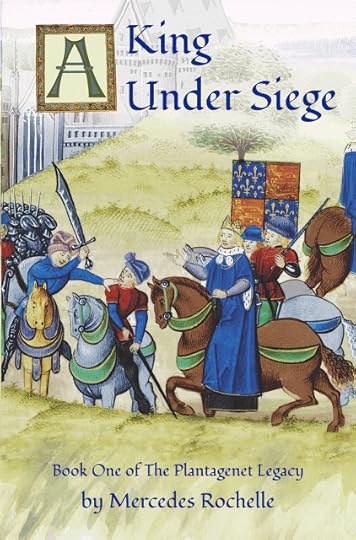
Richard II found himself under siege not once, but twice in his minority. Crowned king at age ten, he was only fourteen when the Peasants' Revolt terrorized London. But he proved himself every bit the Plantagenet successor, facing Wat Tyler and the rebels when all seemed lost. Alas, his triumph was short-lived, and for the next ten years he struggled to assert himself against his uncles and increasingly hostile nobles. Just like in the days of his great-grandfather Edward II, vengeful magnates strove to separate him from his friends and advisors, and even threatened to depose him if he refused to do their bidding. The Lords Appellant, as they came to be known, purged the royal household with the help of the Merciless Parliament. They murdered his closest allies, leaving the King alone and defenseless. He would never forget his humiliation at the hands of his subjects. Richard's inability to protect his adherents would haunt him for the rest of his life, and he vowed that next time, retribution would be his.
Amazon UK • Amazon US
Mercedes Rochelle
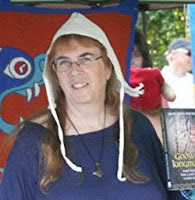 Born in St. Louis MO with a degree from University of Missouri, Mercedes Rochelle learned about living history as a re-enactor and has been enamored with historical fiction ever since. A move to New York to do research and two careers ensued, but writing fiction remains her primary vocation. She lives in Sergeantsville, NJ with her husband in a log home they had built themselves.Mercedes loves to hear from readers. You can find her: Website • Blog •Facebook • Twitter.
Born in St. Louis MO with a degree from University of Missouri, Mercedes Rochelle learned about living history as a re-enactor and has been enamored with historical fiction ever since. A move to New York to do research and two careers ensued, but writing fiction remains her primary vocation. She lives in Sergeantsville, NJ with her husband in a log home they had built themselves.Mercedes loves to hear from readers. You can find her: Website • Blog •Facebook • Twitter.
Published on March 29, 2019 00:00
The Coffee Pot Book Club
The Coffee Pot Book Club (formally Myths, Legends, Books, and Coffee Pots) was founded in 2015. Our goal was to create a platform that would help Historical Fiction, Historical Romance and Historical
The Coffee Pot Book Club (formally Myths, Legends, Books, and Coffee Pots) was founded in 2015. Our goal was to create a platform that would help Historical Fiction, Historical Romance and Historical Fantasy authors promote their books and find that sometimes elusive audience. The Coffee Pot Book Club soon became the place for readers to meet new authors (both traditionally published and independently) and discover their fabulous books.
...more
...more
- Mary Anne Yarde's profile
- 159 followers



